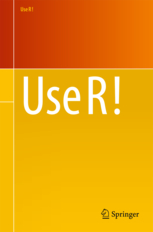BCEA in UseR!

In a recent post, I had hinted at big news for BCEA \(-\) I thought it was pretty much a done deal, but because it wasn’t yet set in stone, I didn’t want to jinx it…
But now I’ve sorted all the details with Springer, who have asked me to write a book on the R package (which I originally wrote to accompany BMHE) and so it’s official: BCEA is going to feature in the Use R! series!
We (“we” being Andrea and myself, who will co-author the book) are very excited about this. We are still working on the next release of the package, which will include the code to run the multiparameter analysis of the expected value of partial information using the algorithm developed by Strong & Oakley and based on non-parametric regression.
But at the same time, Andrea and I will need to crack on the actual write up. The tentative table of contents is this:
- Bayesian analysis in health economics. 1. Very brief introduction to the Bayesian approach, with particular reference to MCMC computations. 2. Basics of health economic evaluation, specifically under a Bayesian approach. 3. Probabilistic sensitivity analysis through simulations.
- BCEA – worked examples to describe all the functions 1. Basic analysis
- Cost-effectiveness plane
- Expected incremental benefit
- Contour plots
- Summary tables
- Probabilistic sensitivity analysis
- Cost-effectiveness acceptability curve
- Expected value of information
- Expected value of partial information (2 stage MCMC and approximation methods)
- Advanced methods
- Mixed strategy
- Including risk-aversion in the utility functions
- Comparison of multiple interventions
- Graphical options in BCEA 1. Brief introduction to ggplot2 and its use in BCEA 2. Differences between the base and ggplot options in BCEA
- Conclusions
The idea is to have lots of worked examples to show how to do the analysis using BCEA. We have some already, but we’ll find new ones as well.